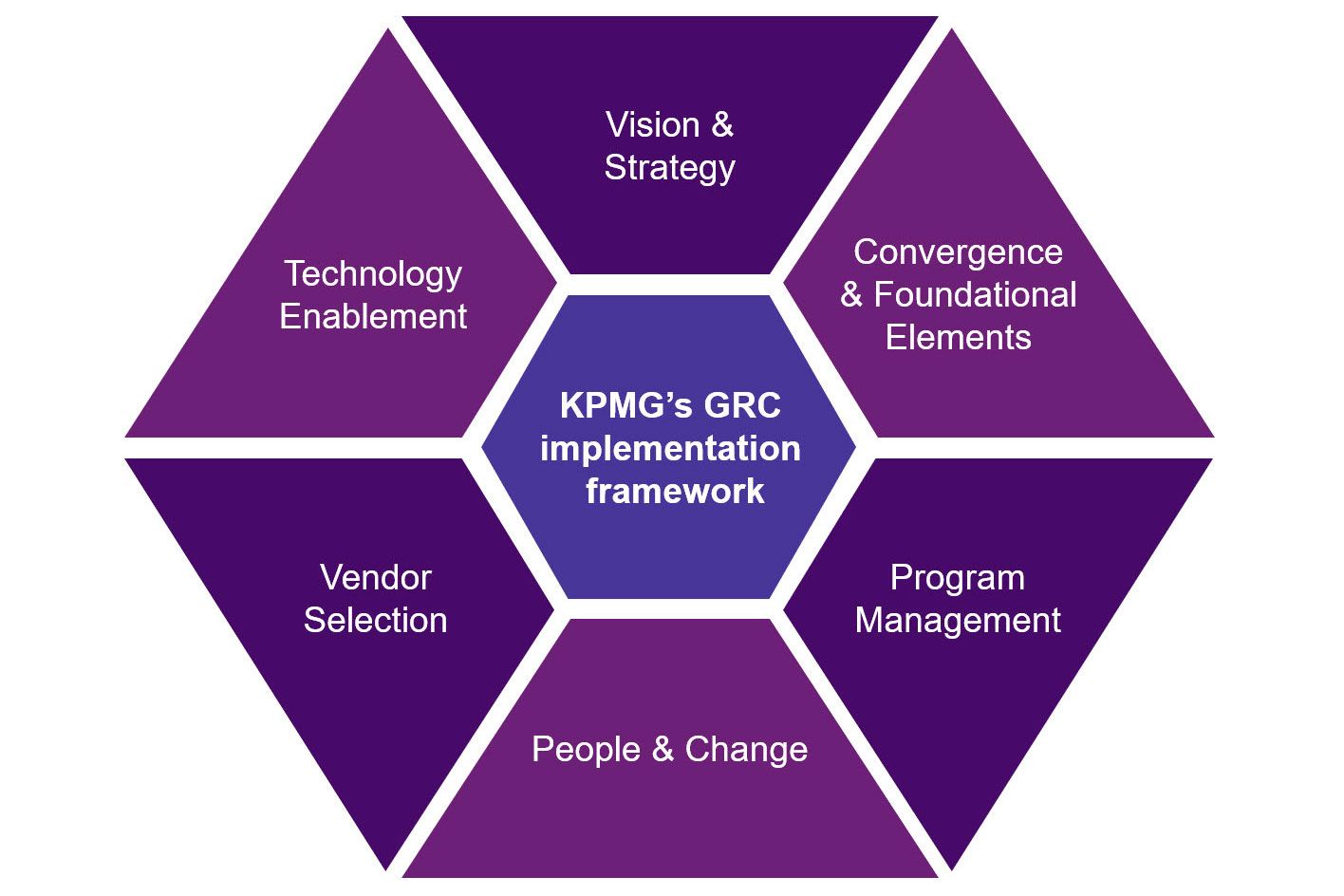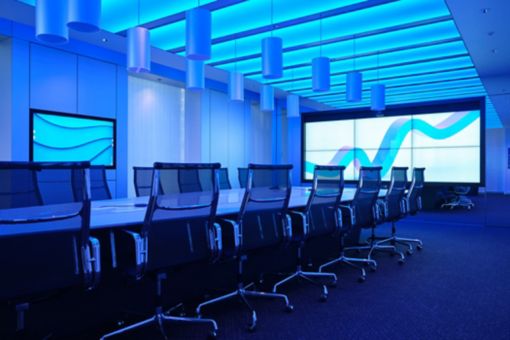Erfahren Sie mehr über intelligente GRC-Lösungen!
Fragen Sie nach individualisierten Masterclasses für Ihre Firma! (EN)Unternehmen sind bestrebt, das gesamte Spektrum interner und externer Risiken effektiv zu managen, angefangen bei strategischen und operativen Risiken bis hin zu rechtlichen, IT- und finanziellen Risiken. Marken- und Reputationsrisiken sind im heutigen digitalen Zeitalter ebenfalls kritisch geworden, insbesondere durch zunehmende Interaktionen in den sozialen Medien und Cybersecurity-Bedrohungen.
Bei KPMG sehen wir GRC-Plattformen als Ansatz, um die Governance-, Risiko- und Compliance-Prozesse des Unternehmens an dessen Strategie auszurichten. Sie ermöglicht die Konvergenz und Transparenz von Informationen, wodurch die Leistung und Widerstandsfähigkeit in einem dynamischen wirtschaftlichen Umfeld gesteigert wird.
Die GRC-Transformationsreise
Die Erwartungen der Regulatoren und die zunehmende Notwendigkeit für Risiko- und Compliance-Abteilungen, ein ausgewogenes Verhältnis zwischen Kosten und Effektivität zu finden, führen dazu, dass viele Unternehmen mit der Implementierung von Governance-, Risiko- und Compliance-Technologien (GRC) beginnen oder ein Upgrade bestehender Lösungen in Betracht ziehen.
Damit diese Implementierungen den erhofften Nutzen bringen, müssen eine Reihe von Faktoren sorgfältig berücksichtigt werden.
KPMG hat ein Implementierungskonzept entwickelt, das Unternehmen bei der Umsetzung oder Aktualisierung ihrer GRC-Technologieprogramme unterstützt.
Intelligentes GRC
Intelligente GRC-Lösungen sind neue technologiebasierte Produkte und Dienstleistungen, mit denen die Effizienz und der Nutzen der GRC-Strategie eines Unternehmens integriert, vereinfacht, gestrafft und optimiert werden.

Intelligente Analytik
Unternehmen bewältigen in einem dynamischen Geschäftsumfeld Risiken und Compliance-Aufgaben. Riesige Datenmengen, viele Datenquellen und vielfältige Beziehungen sind zu komplex für traditionelle Prozesse und Infrastrukturen. Daten und künstliche Intelligenz definieren derzeit die GRC-Praxis neu.

Low-Code-Automatisierung
Gerade nach der weltweiten COVID-Pandemie wollen Unternehmen die Digitalisierung beschleunigen. Digitale Low-Code-Plattformen werden häufig als Einstiegsplattform für die Digitalisierung genutzt, um durchgängige Prozesse zu organisieren, Kontrolle und Transparenz zu schaffen sowie die Prozesseffizienz zu verbessern.

Virtueller Assistent
Binden Sie eine benutzerfreundliche Nachrichten-Schnittstelle in Ihr GRC-Programm ein, mit auf künstlicher Intelligenz basierenden vorgefertigten Dialogen. Virtuelle Assistenten lösen alltägliche Probleme, verringern die Einarbeitungszeit für wiederkehrende GRC-Prozesse und automatisieren Ihren Fehlermanagement- und Risikobewertungsprozess.

GRC SaaS Solutions (KPMG Sofy Suite)
Die KPMG Sofy Suite liefert moderne, gebrauchsfertige Datenlösungen, mit denen Unternehmen bessere Geschäftsentscheidungen treffen, Risiken steuern und die Gesamtleistung verbessern: Die perfekte Verbindung von Ihren Datem mit unserer Expertise und Erfahrung.
Ihre Vorteile
KPMG hat viel Erfahrung und eine bewährte Methodik für Rahmen- und Technologielösungen in den Bereichen Governance, Risiko und Compliance. Wir heben uns durch die folgenden Punkte ab:
Fachkenntnisse
Wir haben die Kompetenzen und das Wissen, um unterschiedliche GRC-Anforderungen in zahlreichen Branchen zu erfüllen.
Fachübergreifende Teams
Unsere Teams erzielen während des gesamten Projekts beste Ergebnisse und integrieren die GRC-Lösung ins Tagesgeschäft.
Erfolgsbilanz
Wir konnten Kunden bei der Implementierung von ganzheitlichen GRC-Lösungen und beim Wechsel von Anbietern unterstützen.
Bewährte Lösungen
Unsere Lösungen beschleunigen die Implementierung von GRC-Kernanwendungen, zusammen mit unseren Kontakten zu Anbietern.





